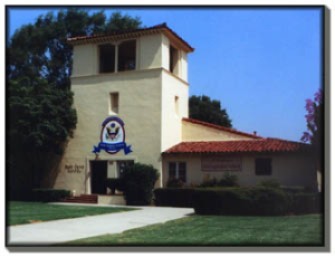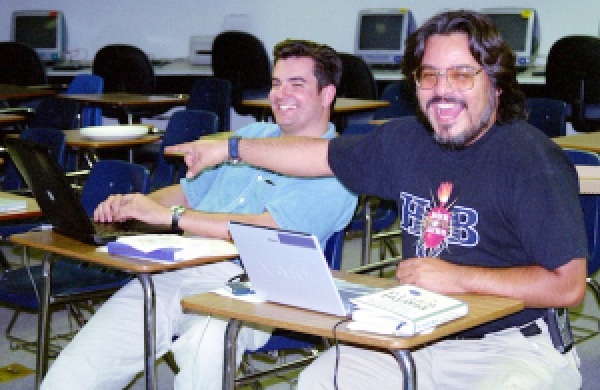I’ve been filling out teaching/education-related job application and I was met with this little gem:
- Please provide a concise statement of your philosophy of higher education. (Minimum: 300 words)
The gift of sharing knowledge and experiences has been one of the greatest keys to human survival and success for millennia. From parent to child, from scholar to neophyte, from craftsman to apprentice, what began in the household became the shared responsibility of the local community. But in this Age of the Internet, where all of human understanding is but a Google-search away, a precise understanding of the role and/or function of formal education is less well defined and therefore under siege.
Having taught in a wide variety of educational institutions for almost twenty-years and participated in my own educational process for the whole of my own life, I recognize the complexity of trying to encapsulate a working philosophy of education and particularly higher education. Based on my experiences working with second-language elementary and middle school learners in low SES communities in combination with the last 14-years working as an online student and then educator has afforded me an understanding of what is needed to address the learning needs of today’s students. I believe that the process can be distilled into four essential categories:
- Curriculum
- Teaching Staff
- Learning Environment
- Learning Community/Cadre
Whether we’re talking about a traditional face-to-face third-grade classroom in urban South-Central Los Angeles or a fully online doctoral program being run by a prestigious university in the Midwest, the quality of the program or learning experience will be based on the strength of all four elements.

One can learn a lot about an institution’s or individual’s philosophy of education based on the which of the four elements is either given priority or is the sole focus of the program. It’s been my observation that many traditional institutions tend put the biggest emphasis on the quality of the curriculum, protecting that content as if it were their exclusive domain. Thus the belief is essentially that the educational process is data transferal from one generation to the next. In this model getting an education is having access to this curriculum and the business model is that one must pay tuition to have access to this curriculum. If the institution is aware of the competitive market it must work within, then the quality of the teaching staff and bucolic setting of its campus will also be promoted. But at its core it’s about the curriculum. Online education, of course, complicates things, but for many, the bucolic campus is simply replaced with a user-friendly website, period. A good website, like a comfortable campus for face-to-face students, is important. But just having a good learning environment is not enough.
As a face-to-face classroom instructor for the first 13-years of my teaching career, I understood the importance of working with the classroom dynamic and using it to the benefit of the learning process. Thus, I naturally tended to break the classroom down into small heterogeneous working groups, making sure that there was at least one strong-willed female per group, one high-achiever, and mixed learning styles spread amongst the groups. It was simply more efficient for me to work with students as groups and then let them delegate the learning task. The assignment may have been turned in individually, but the learning task was done as a group. It wasn’t that all of my students were limited in the attention I made available to them but that management was more delegated and there was a sense that “we” were working toward a common learning goal. Working with Latino students, I saw this as a strength and means to manage the room by working with them as groups. But I did this to make my job easier, not really realizing that I was empowering my students’ learning experiences by not only permitting them to work together, but by requiring it.

When I began my online learning experience at Pepperdine University in 2001 I was introduced to the work of Dr. Etienne Wenger, who popularized the idea of Communities of Practice and Dr. Frank Smith, whose The Book of Learning and Forgetting, discussed the sociological component of education and learning. The stereotype of online learning tends to be of some kind of isolated impersonal correspondence learning that isn’t even the least bit as dynamic or life-changing as face-to-face on-campus learning. How can it be, if one never sees another human face, except for pre-recorded video-lectures shot from across a huge hall, and any interaction is via email messages with 24-hour or more lags between message and response? But Pepperdine did something different and required all students to participate in a week-long tech-camp the July before beginning our programs so that we would become familiar with each other’s personality and begin to form working relationships and friendships with our classmates. Then when we went back to our homes spread out across the world and began our class sessions we could fill in the personalities behind the text-based communication. But we did more than just fill in the personality-gaps in our Internet-based communication. After all we were a group of 25 who were studying and using educational technology, so we fully employed the technologies, such as Instant Message and discussion groups to break the Class Session/Study/Project/Class Session cycle, and formed our own small groups to work together and to interact with whenever we wanted. Compared to my large-lecture-hall-solo-learning experiences that I tended to have when I studied for my teaching credential in the mid-1990s, my online learning experiences were personal, and powerful and changed what I believed could be accomplished in education.

Dr. Frank Smith raised concerns that the increased use of technology in education was a step in the wrong direction, making the learning process even more impersonal, isolated and one-size-fits-all (The Book of Learning and Forgetting, p.73). Given how many institutions have implemented online learning as a webpage and recorded lectures I can see how this fear is justified. However, my experiences with Pepperdine and the last six-years teaching online have proven to me that it isn’t technology that one should fear, but decision-makers who believe that education can be a pre-packaged product. The difficulties being faced by institutions turning to MOOCs (Massive Open Online Course) lends itself to the problems of thinking that education is simple access to good curriculum. As an online student and online educator I know that without harnessing the power of a small group of individuals working towards a common goal one does not have a healthy educational process. Determining how to support this process, that includes all four categories, will be the challenge facing all educational institutions and especially higher education where much of the research behind the curriculum is available online without the “benefit” of a college degree program.
The following is a list of articles I’ve written about online education and my experiences as a student and teacher using online ed:
- What Do Online Educators Do: The Mythical Boundary between Personal Life and Work Life
- What Do Online Educators Do: More Connected and Not Limited to Any Place or Time
- Online Ed Doesn’t Equal Correspondence Ed
- Too Much Information: The Value of Organized Education in the Era of Everything on the Internet
- What Do Online Educators Do: Teacher Appreciation/What Do You Make?
- Teaching Using Tech: Philosophy of Higher Education, Part 2
Click Here to Return to Joe Bustillos’ Academic Portfolio
Click Here to Return to Joe Bustillos’ Resume

JoeBustillos.com (website) by Joseph Bruce Bustillos is licensed under a Creative Commons Attribution-NonCommercial 4.0 International License



